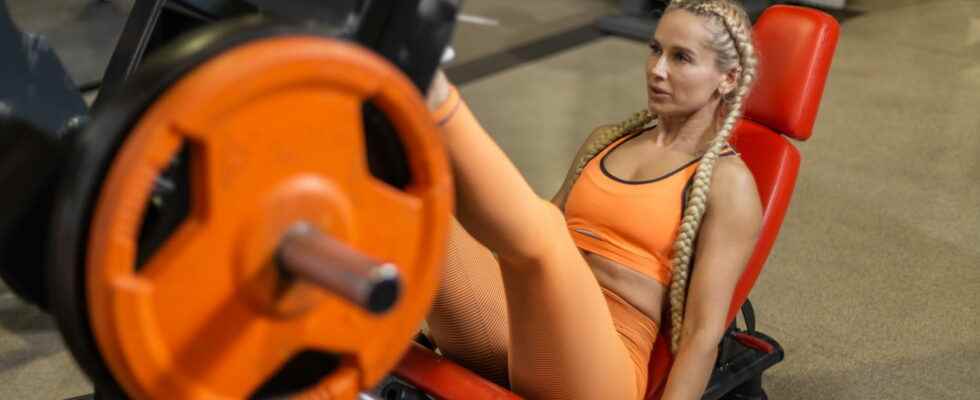Muscle hypertrophy is defined as an increase in muscle size. Triggered by strength training with resistance (weight), it is linked to bodybuilding. Is it a sign of good health? How to maximize it? And what precautions should be taken?
Definition: what is muscular hypertrophy?
“Hypertrophy is a general term that refers to an increase in the size of an organ or tissue by the enlargement of the cells that compose it, says Alexandre Saidani, physiotherapist. DIn the context of muscle hypertrophy, this is theType II muscle fiber thickening (also known as fast twitch fibers) which will create bigger and stronger muscles“. This increase is induced by intensive training against resistance.
What are the main causes of muscle hypertrophy?
“We distinguish three main factors which are likely to initiate muscle hypertrophy, assures Thomas Geraci, physiotherapist: muscle damage, mechanical strain and metabolic stress”.
► As part of a trainingmuscle hypertrophy is the consequence of the solicitation of one or more muscles in the face of sufficient resistance, to voluntarily create lesions to the muscle fibres. These lesions will be repaired in the days following protein training. These will increase the resistance of muscle fibers and adapt to future muscle stress.
► “Furthermore, mechanical tension caused by contractions and the stretching in the face of resistance will increase muscle mass while the absence of exercise results in atrophy”.
► Finally, numerous studies underline the importance of metabolic stress in muscle mass gain. “Metabolic stress appears when we increase the workloads on a muscle or a certain group of muscles. When the muscles start to “burn” it leads to a gradual increase in muscle growth”.
Is it a sign of good health or disease?
“If we talk aboutventricular hypertrophy (thickening of the muscle of the lower cavity (ventricle) of the heart) for example, this is a disease that will require treatment, continues Thomas Geraci. On the other hand muscle hypertrophy is a sign of good health and regular physical activity”.
There is no magic formula for maximizing muscle hypertrophy because everyone is different. “However, everything is based on moderate-intensity training, resumes Alexandre Saidani. This is about work between 8 and 12 movements, in series of 4, at 60/70% approximately the weight of our maximum repetition RM (i.e. the maximum load that one can lift at one time)”. This training should include as much range of motion as possible to stretch the muscle, the helping to gain volume along its entire length.
However, recent literature shows a much wider range of training options, says professional science blog NeuroXtrain. Several studies have shown that training with low loads (30-60% RM) results in hypertrophy similar to training with moderate and high loads (> 60% RM) in case of voluntary (or muscular) failure. Furthermore, it has been established that the volume of RT, defined as the total number of repetitions (repetitions x sets), associated with the loads used for a given exercise, is the key element of adaptation in terms of muscle hypertrophy. ; moreover, it has been suggested that higher effort volumes are warranted to maximize muscle growth response in various populations.
Nutrition is also an important factor for muscle hypertrophy to really kick in. “It helps recovery after exercise and allows you to follow sessions“. Prioritize in particular post-workout protein and drink plenty of water (minimum 3 liters/day).
Doing it alone is risky because the patient may do their movements incorrectly
What are the risks and precautions to take?
“Muscle hypertrophy requires multidisciplinary care with the doctor, the nutritionist/dietician, the physiotherapist and eventually the sports coach, insists Thomas Geraci. Doing it alone is risky because the patient may do their movements incorrectly, doing too much and too hard which can create new lesions (inflammation, tendonitis, tears, etc.). As a physiotherapist, we will work on muscle hypertrophy in order to give a patient, in rehabilitation after orthopedic surgery or an injury, muscle autonomy“. In any process of muscle buildingit is important to have good vacuum hygiene, rest and to warm up well before any effort.
Thanks to Thomas Geraci and Alexandre Saidani, physiotherapists at the Clinique du Parc in Castelnau Le Lez (34).
